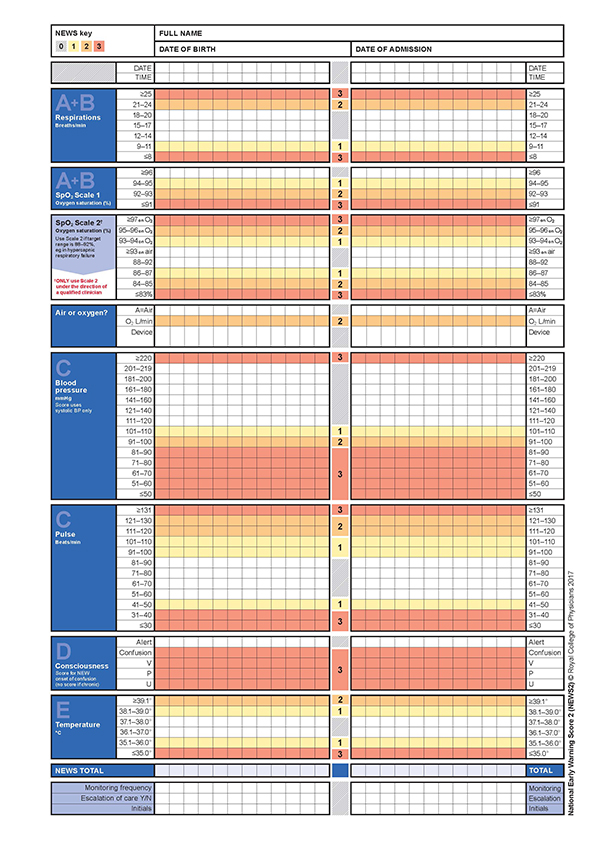
Observation chart
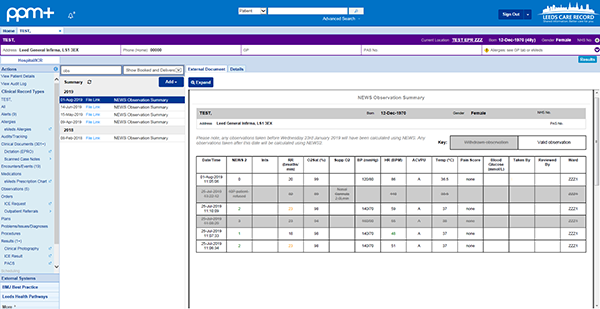
e-Observation chart
A review of the charts is an essential part of the evaluation of the patient and is best performed at the bedside. There can be numerous charts available depending on the patient’s clinical situation.


Every patient will have an observation chart with an early warning score calculated (e.g. NEWS2). This will show the trend in observations (pulse rate, Blood Pressure (BP), oxygen saturations, temperature, respiratory rate and conscious level) over time. This will give you vital information on the patient's rate of deterioration. A NEWS2 calculator is available in the RRAPID app
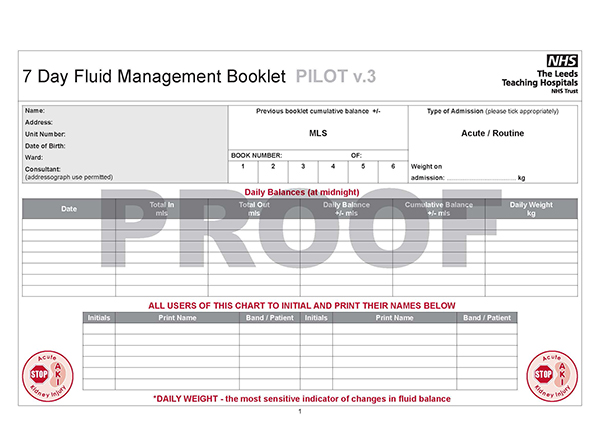
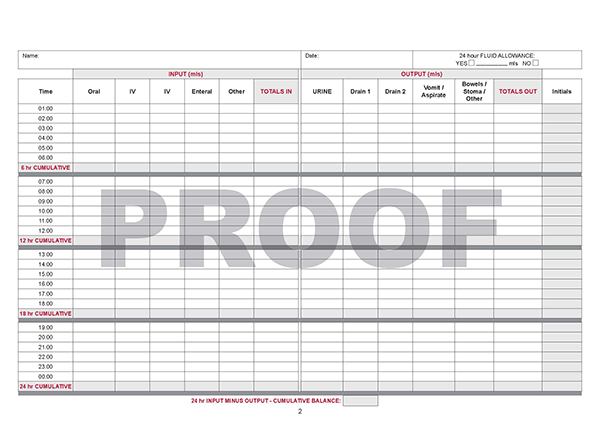
There will be a fluid prescription chart and often a fluid balance chart, which should show exactly how much fluid a patient has received (intravenously or orally) compared to the fluid output (urine, stool, vomit, surgical drains, nasogastric aspirate etc.). These charts contain important clues to the patients overall fluid balance and therefore volume status. It is important to remember that patients will lose up to 500 mls a day of fluid in insensible losses through sweating, breathing and GI losses. Insensible losses will be increased in a patient who is pyrexial.
When prescribing fluids it is important to perform a volume status examination and review the fluid prescription chart, fluid balance chart and daily weights. Trends in daily weights represent the best way of assessing a patient's volume status. Examining the fluid prescription chart will tell you what fluids have been prescribed, and how quickly they have been given.
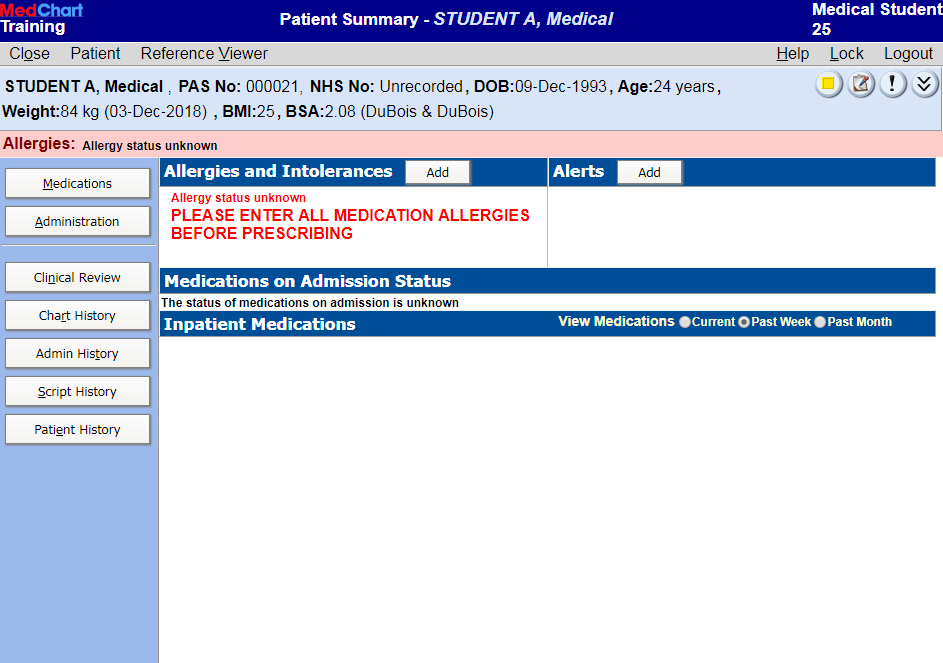
A patient’s medication chart contains a lot of information. The patient’s usual medications should be prescribed as well as any new drugs the patient has been commenced on since admission to hospital. It also should have any recorded allergies. Many medications given to patients can cause homeostatic problems. For example a recently started diuretic can affect renal function or if Tazocin (piperacillin/tazobactam) is given to a penicillin allergic patient, anaphylaxis can result. The patient’s usual medications may need to be withheld during periods of acute illness. For example antihypertensive medications (angiotensin converting enzyme inhibitors, beta-blockers, calcium channel antagonists) should be withheld in a hypotensive patient.
Oral hypoglycaemic medications should be withheld if the patient is not eating. If the patient is at risk of an acute kidney injury then any nephrotoxic drugs need to be reviewed. It is a complicated area and senior input is required.
If in doubt always check the British National Formulary (BNF) and local clinical guidelines.